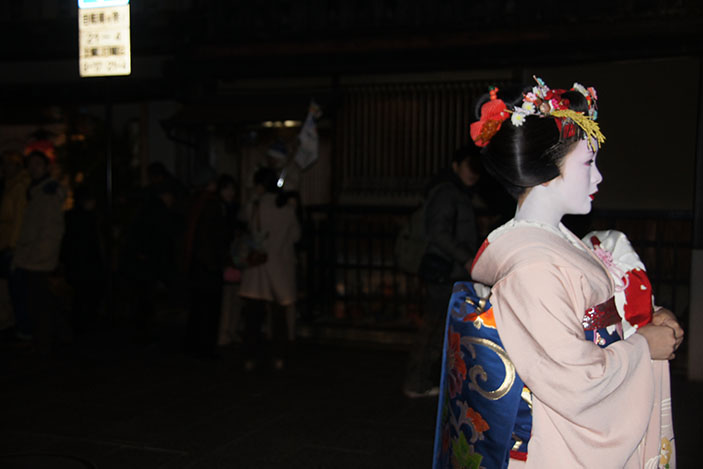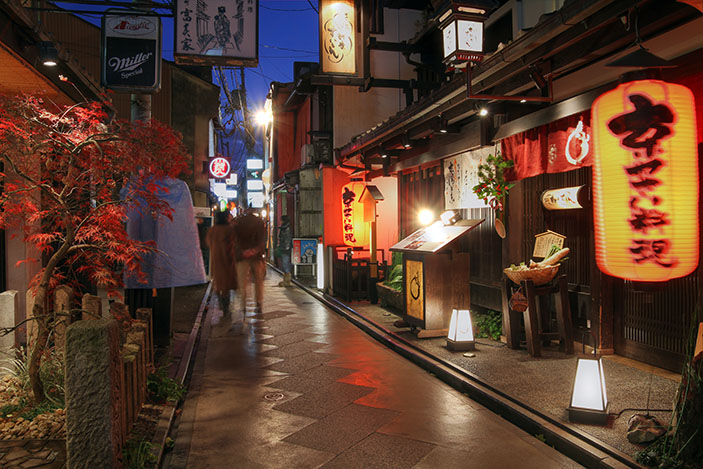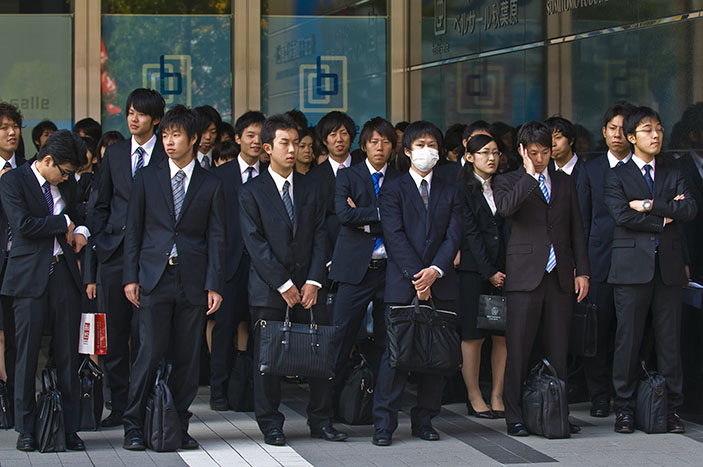AS THE annual gathering of geishas in Kyoto dispersed, the patient photographers gathered outside the hall in Gion come to life, hoping to grab some great shots of the dolled-up women who continue to be iconic of Japan worldwide.
Their white faces painted on like masks, many avoid eye contact as they shuffle off on exquisitely hand-crafted slippers to give thanks to the sponsors and establishments that have kept an ages-old talent viable.
Dressed in black kimonos for this annual occasion, the Japanese entertainers in their ¥15 million (S$235,000) outfits that will only be used once are a symbol of a way of life that is creeping into the shadows.
There are around 30 geikos — as they are referred to in Kyoto — in these parts, and although there are still those who want to be indoctrinated into this exclusive community of entertainers, the lure of big cities with brighter lights and a faster way of life continues to pull the youth away.

For the maikos — apprentice geikos who have to master the shamisen and other instruments, learn to dance gracefully and perform the tea ceremony to perfection under the watchful eye of a “mother” — it is a tough call. The modern world may not be as exacting as the traditional, and certainly offers far greater liberties.
For those who endure the four years or rigorous education before becoming a geiko, the pay off — if they are popular — is a nightly ritual of entertaining.
The glamourising of the courtesan’s lifestyle is perhaps one of the many veiled facades that Japan continues to present to the world. Like the geikos and their painted faces, it’s hard to see beyond a truth and a life that is at best skin deep.
Sensory Pleasures
As you walk through the streets of Kyoto’s Gion district, there is much activity on the narrow roads. Kyoto’s pleasure quarter is filled with ochaya (teahouses) where geikos have been entertaining since the 1500s.
This quaint neighbourhood of clean little back alleys and wooden houses is a tourist magnet. Along Hanami-koji Street, the dining options are plentiful. They include a range of fare, from preserved houses that offer Japanese haute cuisine, kaiseki ryori, to the exclusive ochaya, where an invitation is often required to enjoy an evening in the company of geikos and maikos.

Pontocho is another area where the geiko-spotters hang out. By night, the strip is busy with strollers, but a lot goes on behind closed doors, where the yakitori stores, restaurants and teahouses are often filled. Most establishments are open from 5pm till 11pm, and some are open for lunch.
Coping With Change
Even as Kyoto holds on to its past, Japan, as a nation continues its journey as part of a rapidly evolving world. The country played an influential role in progressing the role of technology in the world but its unique ways and culture kept much of the outside world at arm’s length.
But as the Western world encroached upon its delicate silken fabric, the patterns have changed, the weave altered and society has seen traditions slowly fading like old memories.
Like the geishas, Japan’s salarymen have been the face of the white-collar worker; a symbol of relentless routine. College graduates who join companies fresh from their studies on April 1 each year are finding it harder to come by opportunities, as global competition muscles into the picture. But a newer generation of Japanese youth are not so keen on being stressed out by the salaryman’s long hours and the need to impress his superiors.

Living To A Formula
Takahashi-san, an old acquaintance in his early 50s who has been in the hospitality business all his life, shakes his head as he reflects on the changes that have reshaped his country in his lifetime. He particularly remembers his youth as a time spent travelling the world.
“We didn’t have much money, but what we earned we spent on backpacking around the world. We were curious to explore what was going on out there,” Takahashi observes.
“The youth today are happy to watch it on television. They spend too much time at their computers. They have little of that sense of adventure.”
As many societies bemoan the attitude and behaviour of younger generations, Takahashi’s concern is that Japan is becoming insular again. He feels that with the economy on the wane, having been overtaken by China as the world’s second-biggest economy for the first time in four decades, the government going through many rounds of leadership changes, and other countries like South Korea leapfrogging them, if the Japanese youth are not willing to go out there and mix it up with the rest of the world, it could spell darker days ahead for the land of the rising sun.
This article was first published in STORM in 2011.
Main Image: Shirakawa River in Gion / Sean Pavone / Shutterstock.com



















